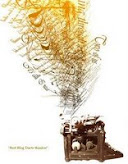Throughout history, mosaics have been used for decoration in homes and public places. Many things can be decorated with mosaics including floors, walls, vases, and tables. Shown below are two pictures of the ruins of mosaic floors from the ancient Roman baths. In ancient Rome, people went to the baths to socialize while they bathed. You can even see the drain in one of the pictures.
When creating a tile mosaic, the artist begins by sketching the picture he wishes to create onto the surface he plans to mosaic. Then he lays out the colored tiles so he can make sure the picture is exactly what he wants. Sometimes he has to cut pieces of tile to fit into place. When he’s happy with the picture, he glues the tiles down with a special glue made for attaching tiles. Finally, the artist fills in the cracks between tiles with grout. This is called the “direct mosaic method.” There are other ways to create mosaics but they are more complicated and this is all you’ll need to know when you make your own later in the week.
Below are some picture of a tile mosaic my parents made for their bathroom. You can see the lines of the drawing in places that haven't yet been tiled. The picture was inspired by the sink you can see in the final picture.


 Finally, I wanted to show you a few more examples of mosaics. The first picture below is the floor of the Curia, the Senate building of ancient Rome, which you can still visit today. The second picture is the floor of the British Museum. The third is a floor in the Vatican Museums. As you walk through the museum, this floor comes before the Sistine Chapel where Michelangelo painted the ceiling. The last picture is the floor of a church in Rome. I’m not sure which one. I took a lot of pictures of mosaic floors, as you can tell, and I lost track of which floor belonged to which church. I think these old, mosaic floors are beautiful. What do you think?
Finally, I wanted to show you a few more examples of mosaics. The first picture below is the floor of the Curia, the Senate building of ancient Rome, which you can still visit today. The second picture is the floor of the British Museum. The third is a floor in the Vatican Museums. As you walk through the museum, this floor comes before the Sistine Chapel where Michelangelo painted the ceiling. The last picture is the floor of a church in Rome. I’m not sure which one. I took a lot of pictures of mosaic floors, as you can tell, and I lost track of which floor belonged to which church. I think these old, mosaic floors are beautiful. What do you think?















No comments:
Post a Comment